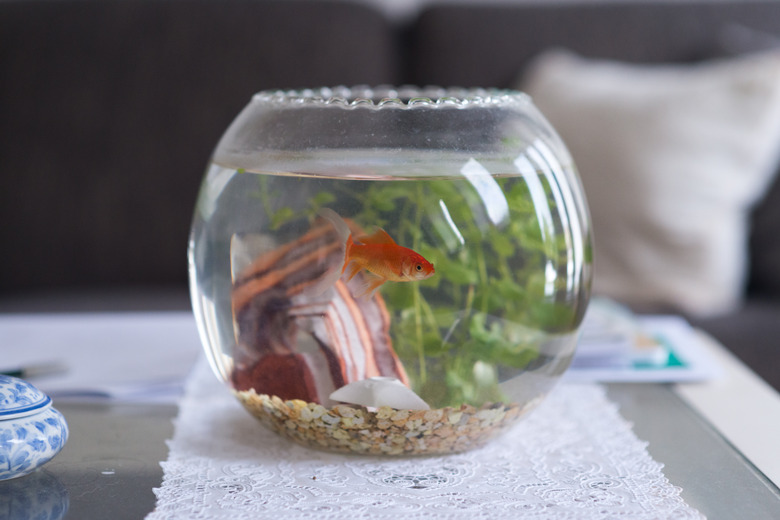How Can pH Affect Your Fish?
Fish and other aquatic animal and plant life require the water they live in to be a certain pH level in order to be healthy. If the pH level is too low or too high, it can make fish sick, even kill them. A low pH means that the water is acidic; a high pH means that the water is alkaline.
What is pH?
What is pH?
The term pH describes how acidic or basic a substance is. The H refers to the amount of hydrogen ions and hydroxide ions present in a liquid, such as your fish tank water. The lower amount of hydrogen ions present, the more acidic the substance. The higher amount of hydrogen ions, the more basic the substance. The pH scale is a diagram that provides a visual guide for the different levels of pH. Pure water has a neutral pH, or a pH level of 7. Milk has a pH level of 6. The lower the number on the pH scale, the higher the amount of acid the substance has. For instance, lemon juice has a pH of 2 and battery acid has a pH of 1. Levels higher than seven are more basic or alkaline. Baking soda has a pH of 9. Lye, a caustic alkaline substance that can give you a chemical burn when it touches your skin, has a pH of 14.
pH and Ammonia
pH and Ammonia
Strong acids and bases can dissolve into water and change the water's pH level. Rocks, chemicals, and even adding or removing fish from your fish tank can alter the level of pH in the water. This affects other chemicals present in the water, such as the ammonia from fish waste. When the water's pH level drops and it becomes acidic, the amonia ions chemically react with the water to form harmless ammonium ions and hydroxyl ions and carbon dioxide. Some rocks not specifically sold for fish tanks can have harmful elements in them, such as limestone, which can raise the pH in your water and make it more basic. When the water's pH level rises and it becomes more basic, the ammonium ions can chemically react with the water to form toxic ammonia ions, which can poison and kill your fish.
Fish Water pH
Fish Water pH
Fish thrive when the tank water is the same pH as the water found in their natural environment. Different species require different pH levels. Some plants and aquatic animals can tolerate a higher acidity content or pH than others. For instances, koi thrive in water that has a pH of 7.5 and can tolerate water that is as high as 8.2 pH. Oscar fish prefer water that is more acidic with a pH of 6.5 or 7. African Cichlids prefer water that is more basic with a pH of 8.5. Ideally, the goal is to have fish tank water that has a neutral pH of 7.
Harmful pH Levels
Harmful pH Levels
Tank or fish pond water with a low pH is highly acidic and can burn a fish's skin. Tank or pond fish water with a high pH is highly basic or alkaline, and can chap or chemically burn a fish's skin. Young fish are more sensitive to higher acidic water than adult fish. Fish water that has a pH of 5 is too acidic and will kill off fish eggs, they will not hatch.
Changing pH Levels
Changing pH Levels
Use a pH fish tank water test kit to test your water. If your fish tank water pH levels are too low, the water is too acidic. To raise the pH level up to 7 you can add limestone or crushed coral to the water, aerate the tank water with an air pump to eliminate excess carbon dioxide that has formed in the low pH water, or use an alkaline buffer to neutralize the acid and make it a more nuetral pH. If you live in an area with hard water, or water that has a high pH, lower it by adding an acid buffer, use a water softener or filter the water over peat moss.
Cite This Article
MLA
Rohlin, Alexis. "How Can pH Affect Your Fish?" sciencing.com, https://www.sciencing.com/can-ph-affect-fish-12101588/. 13 March 2018.
APA
Rohlin, Alexis. (2018, March 13). How Can pH Affect Your Fish?. sciencing.com. Retrieved from https://www.sciencing.com/can-ph-affect-fish-12101588/
Chicago
Rohlin, Alexis. How Can pH Affect Your Fish? last modified March 24, 2022. https://www.sciencing.com/can-ph-affect-fish-12101588/
